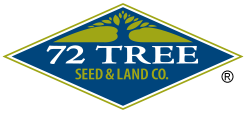Notice: Undefined variable: page in /home/vrxdg1855sn3/public_html/wp-content/themes/72tree/content.php on line 15
Notice: Trying to get property 'ID' of non-object in /home/vrxdg1855sn3/public_html/wp-content/themes/72tree/content.php on line 15
When Should I Cut Down A Tree on My Property?
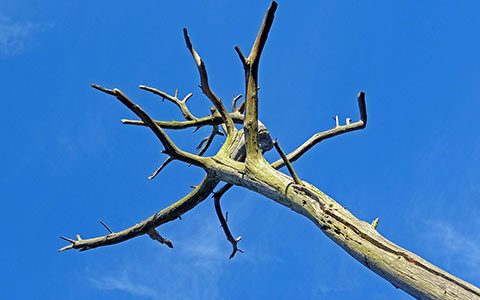
Does your tree look sick or like it’s going to fall? By knowing the signs of a hazardous tree on your property, you can take action to prevent catastrophic damages and losses.
72tree.com gathered information on the signs of a dead, dying, or dangerous tree, and whether or not it should be removed.
When Is Tree Removal Necessary?
You may need to remove your tree if it:
• Is dead or dying
• Is Rotting or hollow
• Has invasive or destructive roots
• Has been infested and poses a threat to surrounding trees
• Is diseased and could infect other trees or plants
• Poses an imminent threat to people, structures, or vehicles
Trees go through many phases as they mature. When any irregularities are detected, you should contact a professional tree service immediately. Have the tree professionally evaluated and make an informed decision on whether or not to remove the tree.
Is My Tree Dead or Dying?
The answer to that question is: Possibly. A deciduous tree may look dead, when in fact, it may only be dormant. Consider the following when evaluating your tree:
Deciduous Trees – A deciduous tree is one that loses its leaves in the fall and goes into a state of dormancy until the end of the winter season. These trees may look dead while in dormancy but are likely very much alive.
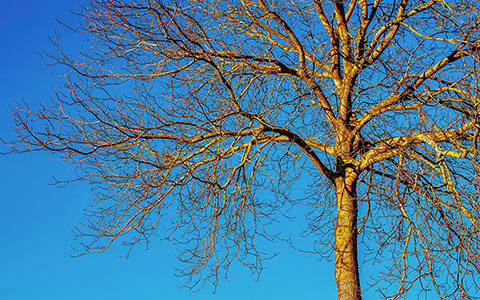
You can confirm this by performing a “scratch test” on a smaller branch or twig. If the twig is dead, it will be dry and brittle underneath the bark. A live one will have a shade of green and be moist under the bark.
Evergreen Trees – An evergreen tree maintains its foliage throughout the year. If you notice an excessive loss of foliage or the discoloration of a large portion of the tree, there may be root, sun, or wind damage.
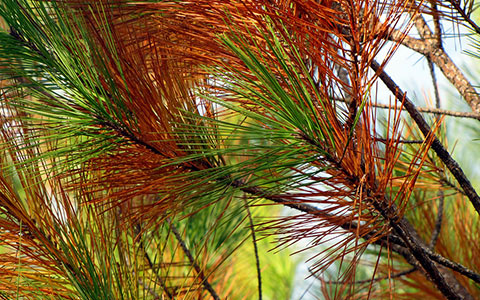
The following are signs of trouble for any tree and should be evaluated by a certified arborist immediately:
• The unusual or untimely loss of foliage
• Sections of the tree failing to leaf out in the spring
• Discoloration or wilting of a section of the tree crown
• New foliage is stunted, wilted, or discolored
• Mushroom conks are growing on the trunk or on surface roots
• Sprouts or suckers growing from the roots of the tree
• Entry or exit holes from boring insects
• Dead branches in the crown
• Sudden shedding of branches
• Your tree has begun to lean
• Neighboring trees are dying suddenly
• Mold or mildew has grown on a significant portion of the foliage
• There is significant damage to foliage from an insect infestation
• Your tree was struck by lightning
• Large portions of bark have been damaged or fallen off the trunk
• A severe storm has stripped your tree of foliage and damaged multiple branches
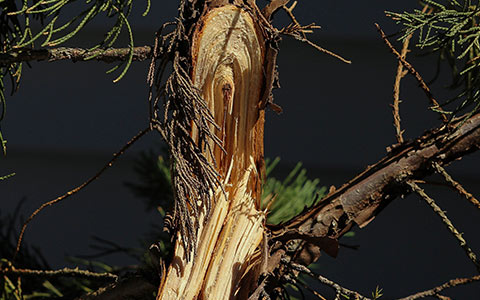
Through the life of a tree, it will face many health threats. In most cases, it can overcome those threats and continue thriving. However, when the tree is confronted by multiple threats, its health may decline, allowing some of those threats to damage it severely enough to kill it.
Many of the above signs can be mitigated or completely avoided when detected in their earliest stages. You can accomplish this by having an annual inspection performed on your tree(s) in late winter or early spring.
Read more about identifying tree diseases and trouble at 72tree.com/signs-diseased-tree-dieback-suckers-water-sprouts/
Removing Nuisance Trees from Your Property
Some tree species can become a tremendous nuisance as they mature and thrive. Some of the problems they may cause include:
• Interfering with power lines
• Branches overhanging your house, garage, or neighbor’s property
• Invasive roots breaking foundations, invading septic tanks, or buckling concrete
• Large roots growing along the ground surface
• The tree is self-pruning and begins to shed large limbs (eucalyptus trees do this frequently)
Invasive root systems like those of the aspen species can cause massive amounts of damage in a short amount of time. Read more about invasive root problems at 72tree.com/tree-roots-buckling-concrete-driveway/
In cases where a tree is near or on your property line, arguments and disputes may occur between neighbors. Before taking any action, you will need to determine ownership and/or responsibility of that tree. Read 72tree.com/who-is-responsible-overhanging-tree-branches/ to learn how this is determined.
Do I Need A Tree Removal Permit
Cities and municipalities across the country have tree ordinances in place to protect or preserve their trees. That said, there are cases in which dead trees or trees that pose an imminent threat of falling can be removed immediately and without a permit. However, you will likely be required to document the hazard and the need for removal fully. A certified arborist’s report, in some municipalities, may also be required.
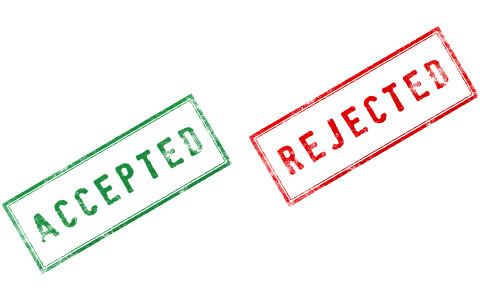
You can hire our arborist, or search for an arborist or verify one’s credentials by visiting treesaregood.org/findanarborist/arboristsearch
Special Trees – Some tree species are vigorously protected in some municipalities, and their removal, for any reason without permission, may result in steep fines, recompense, and even planting new trees of the same or predetermined species, as defined by the tree ordinance. These reasons may include:
• Historical significance
• Age
• Size
• Rare or protected species
• Wildlife refuge
• Trees with a specific diameter at breast height (DBH)
Whenever you have a tree that needs to be removed (for any reason), consult your city’s codes and ordinances to determine whether you need a permit or not. The following may help as well:
• Visit your city’s website and search for tree removal permit information
• Call your city’s arborist or Forestry department
• Hire a professional tree service that can acquire the appropriate permits and do the job.
When it comes to trees, medium and large trees should always be handled by professionals. If you try to cut such a tree down without the proper knowledge and equipment, you may be placing your property and your life in jeopardy.
Removing Trees from Your Property
In this article, you discovered how to determine when a tree is dead, dying, has become a hazard, and if it should be removed.
By taking action when you detect a tree illness, infestation, or damage, you are preserving the safety of your property.
When you delay taking care of sick or wounded trees, you are leaving an open invitation for catastrophic events that can destroy your property and threaten the well-being of you and your loved ones.
Sources:
extension.umd.edu/hgic/topics/how-do-you-decide-when-remove-tree
extension.umn.edu/solve-problem/plant-diseases#tree-and-shrub-diseases-1872363
entomology.ca.uky.edu/ent43
myminnesotawoods.umn.edu/wp-content/uploads/2014/06/MNLawTrees-NuisanceTrees.pdf
Notice: Undefined variable: page in /home/vrxdg1855sn3/public_html/wp-content/themes/72tree/content.php on line 15
Notice: Trying to get property 'ID' of non-object in /home/vrxdg1855sn3/public_html/wp-content/themes/72tree/content.php on line 15
My Tree is Dying from the Top Down
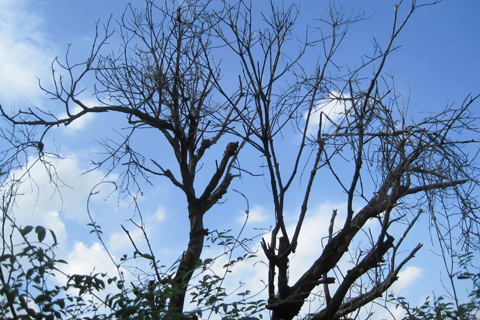
What causes a tree to die from the top down? A common reason for a tree to die from the top down or from its outer limbs is drought. Even with reasonable rainfall, your tree may not be getting the water it needs to thrive and survive.
When a tree begins to deteriorate from the top down, this condition is also known as dieback. Dieback is the gradual death of tree branches, foliage, and/or limbs starting at the tips (extremities) and moving inward toward the trunk. Dieback, as mentioned above may result from drought. However, there may be a variety a variety of causes contributing to the gradual death of your tree.
The following will help you to identify what is causing dieback, the options available to save the tree, and the actions you can take to prevent the tree’s death.
What Can Cause Dieback from the Top Down?
In order to identify the cause of dieback, you need to know what you are looking for. The following are common reasons and symptoms when tree health declines.
Drought – Symptoms include the wilting or discoloration of leaves, limb, twig, and branch dieback, as well as the death of roots. Trees suffering from drought are very likely to be affected by insects, disease, or both.
Soil Imbalance – Soil is composed of minerals, organic and inorganic matter, water, air, and has an acidic or alkaline pH level. When an imbalance of these levels occurs, nutrients needed for the tree’s survival may not be absorbed. This can certainly lead to dieback and death of the tree if not addressed.
A sure sign of soil trouble is the absence of worms, plant growth, and small insects. “Life” should be detected in your soil, if not your soil’s health needs attention.
Insect Infestation – Invasive insect species also cause or accelerate dieback. When trees are stressed, they produce more amounts of nitrogen, potassium and phosphorus. This in turn makes them more attractive to invasive insects that feed off them.
As an infestation grows, the tree becomes more stressed and in turn, produces more of the chemicals – attracting more insects. This process can become a self-reinforced loop, and the initial stressors now combined with the infestation will eventually lead to the death of the tree if not treated promptly.
NOTE: While trees have adapted their defenses and healing processes over the millennia, it is these same adaptations that may feed an insect infestation.
What Options Do I Have to Save My Tree?
For each of the causes listed above, there is a specific course of action to halt or even reverse it. Once the cause is identified, the following simple treatments may help to save your tree.
Drought Treatment – During dry seasons or when rainfall is scarce, give your trees a thorough watering once a week. Make sure that the soil is soaked to a depth of at least twelve inches. Mulching around your trees base will slow the evaporation process and help the soil and tree retain moisture.
Soil Imbalance Treatment – While calling in a Certified Arborist may be the best option here, you are perfectly capable of getting a soil test kit from your local nursery or home improvement store (gardening department). Use the kit to determine if there is an imbalance for the species of affected tree(s), then seek appropriate soil treatments to return the soil to a healthy composition.
Insect Infestation Treatment – Once an infestation is confirmed, insecticides, traps, and oil can be used to kill the existing insects and prevent further infestation. Read this 72tree.com/using-dormant-horticultural-oil-treat-tree-insect-infestations/ for more on using and applying oils to treat insect infestations.
It is important to note that insect infestations are typically the result of a tree already stressed or in bad health. Once the infestation has been dealt with, begin looking for other stressors that may have lead to the weakening of the tree’s health.
How Do You Save a Dying Tree?
When dieback occurs, saving your tree will involve pruning or trimming off the dead parts of the tree, and identifying the reason that the dieback occurred. Once identified, treat it. If it is an infestation that is threatening other trees and plants, you may have to make the decision to completely remove the tree to prevent further contamination and damage.
Proper Treatment and Prevention – Once you have treated the cause of your tree’s dieback, understand that you can save a dying tree by simply paying attention to it through the seasons. Your tree will show signs of stress, and once you detect it, consider it a call to action.
It is equally important to establish and follow seasonal maintenance and care. Bringing in a Certified Arborist or reputable tree service to inspect your trees and landscape will help give you the upper hand in keeping your trees healthy!
